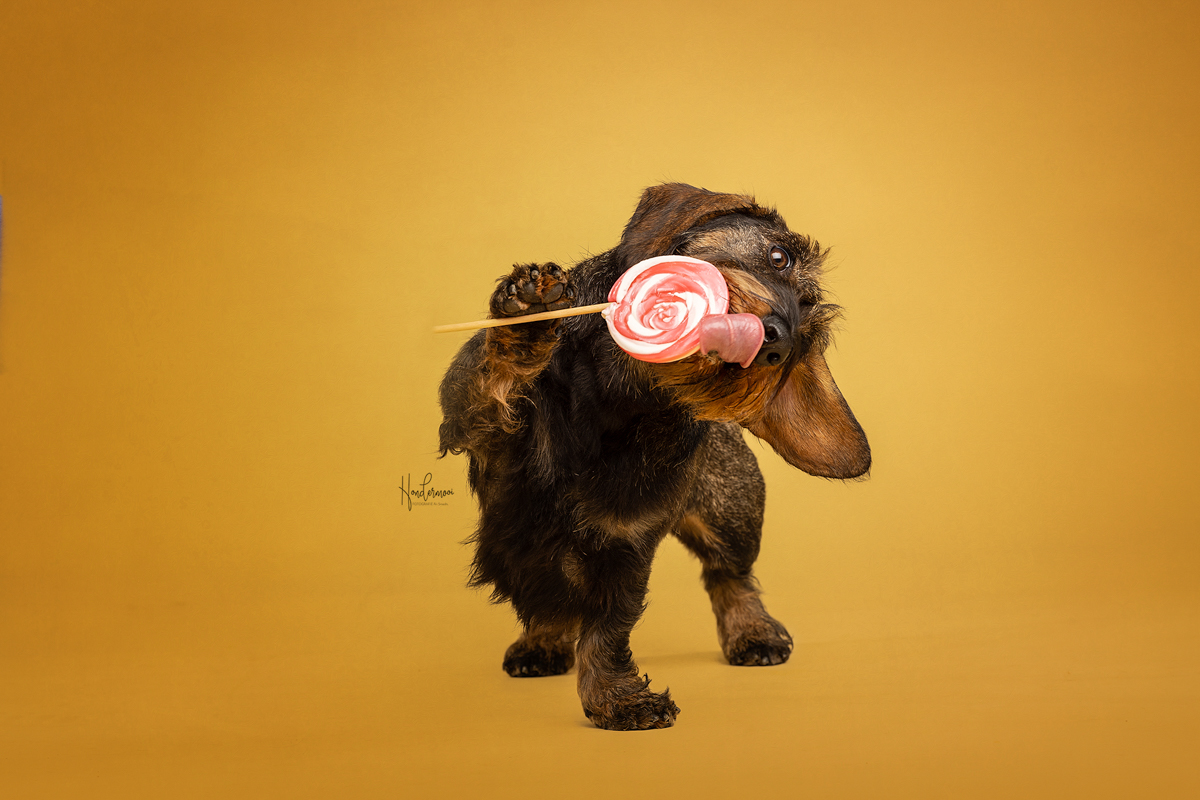A frequently asked question during studio photography workshops is which studio flash is best to purchase when working with dogs. It’s difficult to give a straightforward answer because it depends on your budget, the space you have available, whether you also want to capture action, and so on…
In the article below, I’d like to provide some guidelines to consider when purchasing a flash.
1. Flash power
The power of a studio flash is expressed in Watts and determines how much light the flash emits. The smaller your space, the quicker you’ll get by with less power; the larger your space, the more you’ll benefit from a flash with higher power. Also, if you plan to photograph multiple dogs simultaneously, higher power can be advantageous.
Specifically for dogs, it’s important to consider that the higher you set the flash output, the more “noise” the flash will make, which could be disturbing for some breeds sensitive to noise. From that perspective, it’s interesting to invest in a flash with higher power so that you don’t have to set it at full power, making it less threatening for the dog.
Personally, I have a large space available and work with flashes at 400 and 800 Watts. Also, keep in mind that the more power you bring in, the more expensive your purchase will be.
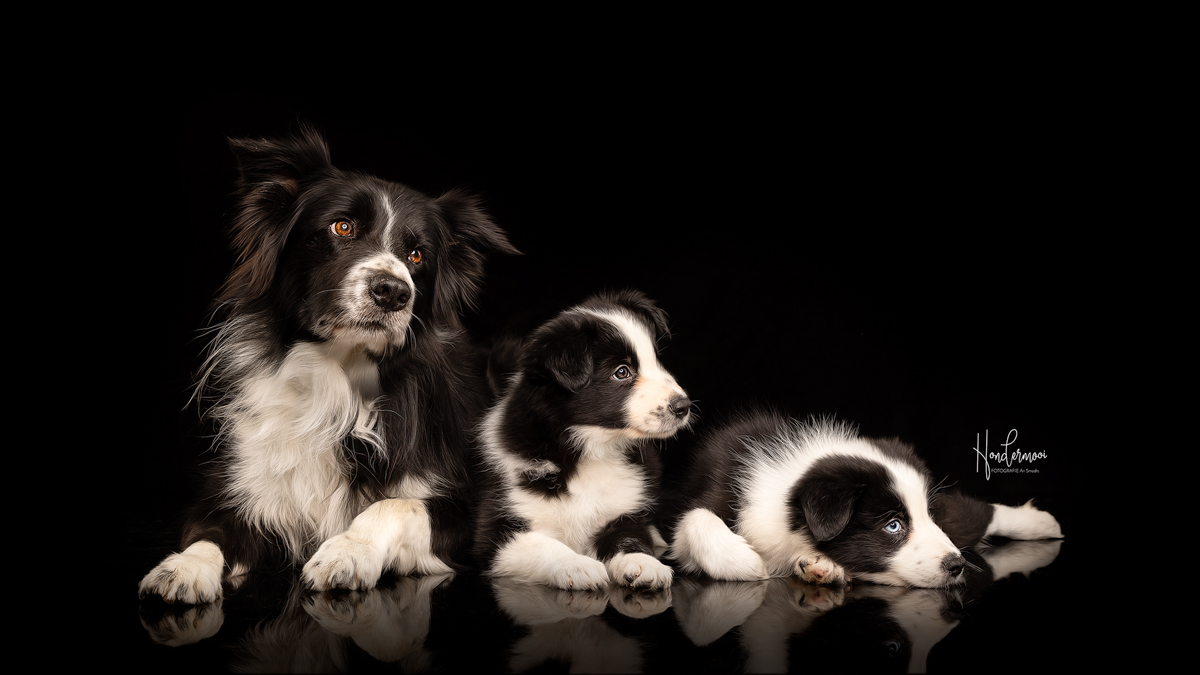
2. Flash speed
When purchasing your studio flash, it’s important to determine what you want to capture in your studio. Are you primarily planning to take portraits, or do you also enjoy capturing movement, such as dogs catching treats?
In the latter case, it’s important to buy a flash with a sufficiently short flash duration. This way, you can freeze the movement perfectly!
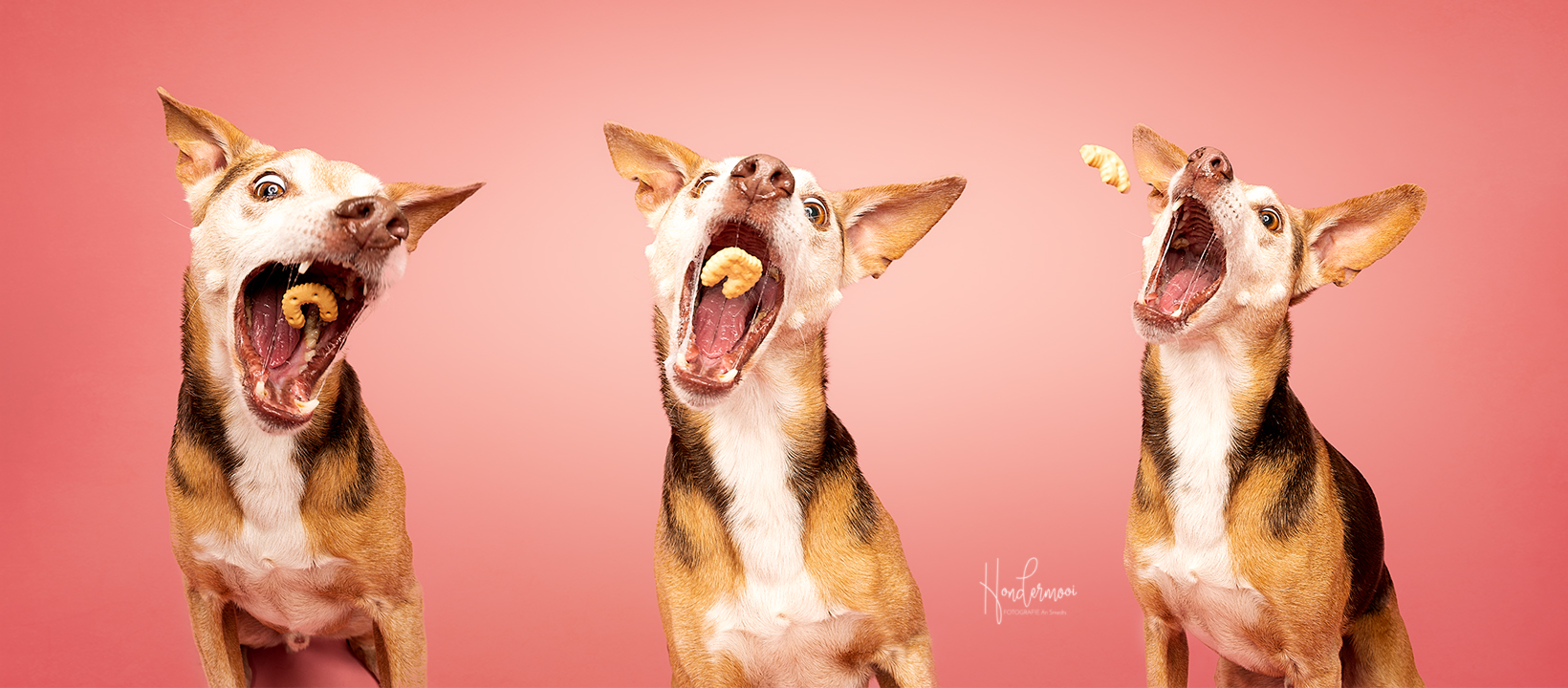
3. Flash recycle time
In addition to speed, it’s also important that your flash has a sufficiently fast recycle time.
The recycle time of a studio flash refers to the time it takes for the flash to recharge after firing a flash.
Generally, studio flashes have recycle times that vary from a fraction of a second to several seconds, depending on their power and design. Some professional studio flashes can have a very short recycle time, allowing them to flash rapidly in succession. Other models may require more time to recharge between flashes.
If you’re working with dogs and you want to capture the puppy like in the photo below, you can imagine that you need to quickly take multiple photos in succession to capture this moment at the right time.
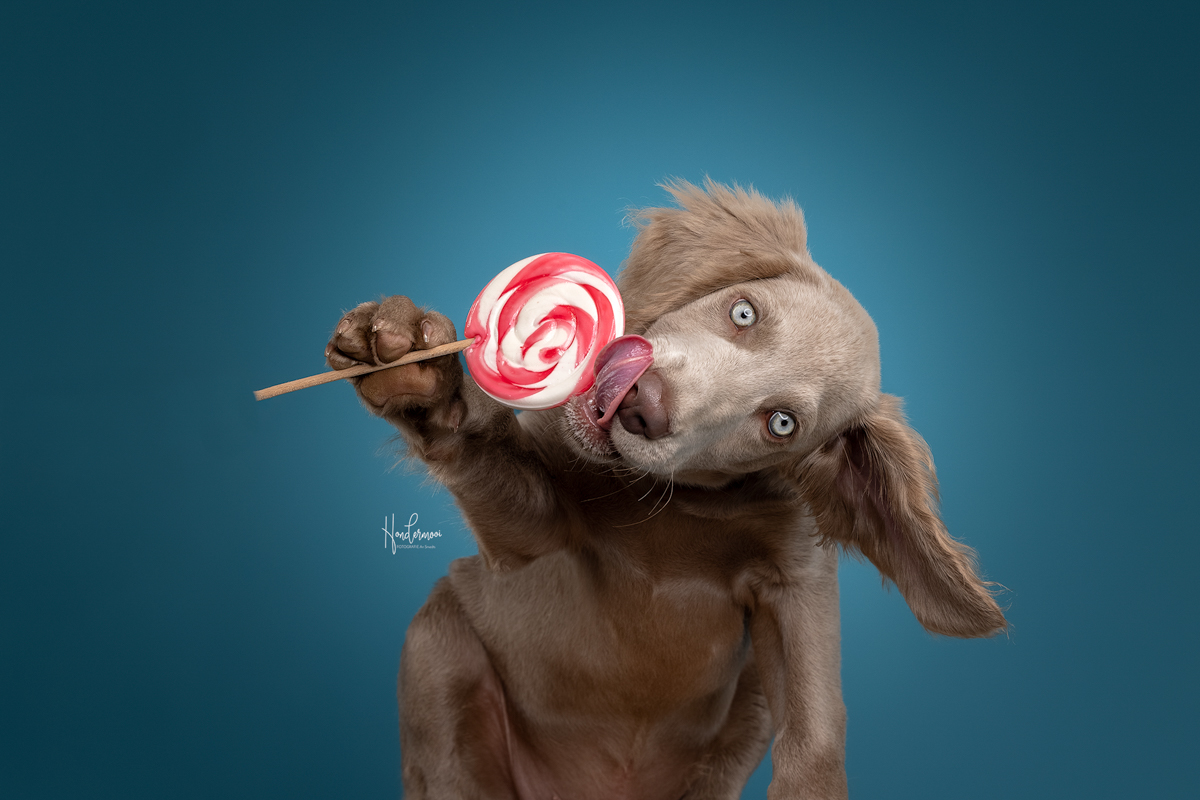
4. Flash sound
You might be considered crazy if you ask about the sound a flash makes in the store, but for dogs, this is indeed important. The quieter the flash, the less some sensitive dogs will have problems with it; the louder the flash, the more sensitive the reaction might be.
Most flashes also have built-in ventilation, which can sometimes be very distracting for a dog when it suddenly starts to “cool down.” So, the quieter the flash, the better! As you could already read in point 1, you can also purchase a flash with higher power with the intention of not using it at maximum power to make less noise.
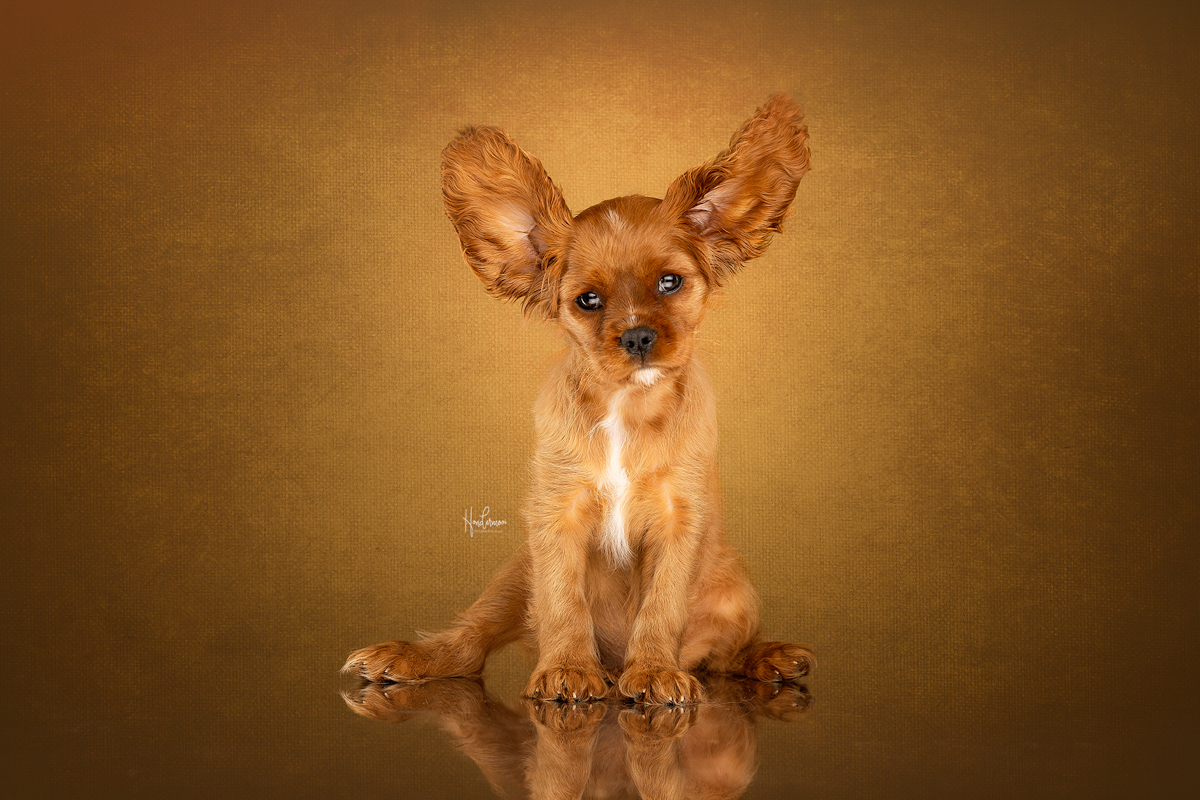
5. Compatibility with light modifiers
In addition to purchasing a studio flash, you will also need a light modifier to mount on your flash.
Light modifiers, such as softboxes, umbrellas, grids, and beauty dishes, are designed with a specific mounting system that depends on the brand. There are Bowens mounts, Elinchrom mounts, Profoto mounts, Broncolor mounts, and so on…
Therefore, it’s important to check whether the light modifier is compatible with the specific mounting system of your studio flash. Some brands may have their own unique mounting systems that may not be compatible with light modifiers from other brands without the use of adapters or specific accessories.
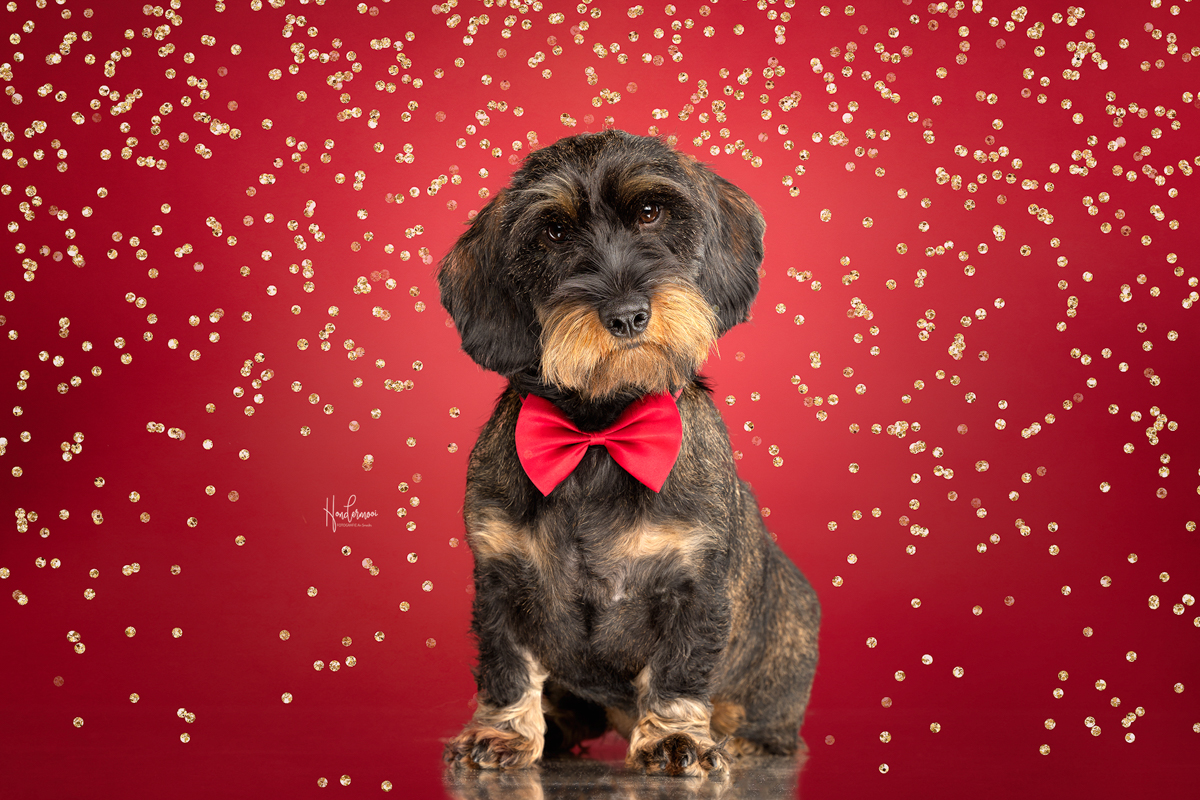
6. Flash with batteries or not?
There are both flash units that operate with batteries and those that operate on mains power.
If you don’t plan to start a mobile studio, then mains-powered flashes are ideal for studio photography if you have a location where you can permanently supply power to the flash. These flashes are often more powerful than battery-powered flashes because of the power they can draw from the outlet.
A disadvantage is that they are less portable and rely on the availability of electricity, which can sometimes be a challenge on location.
If you plan to start a mobile studio, it’s definitely worth looking into the range of battery-powered flashes so that you can capture the best shots even in situations where mains power isn’t available.
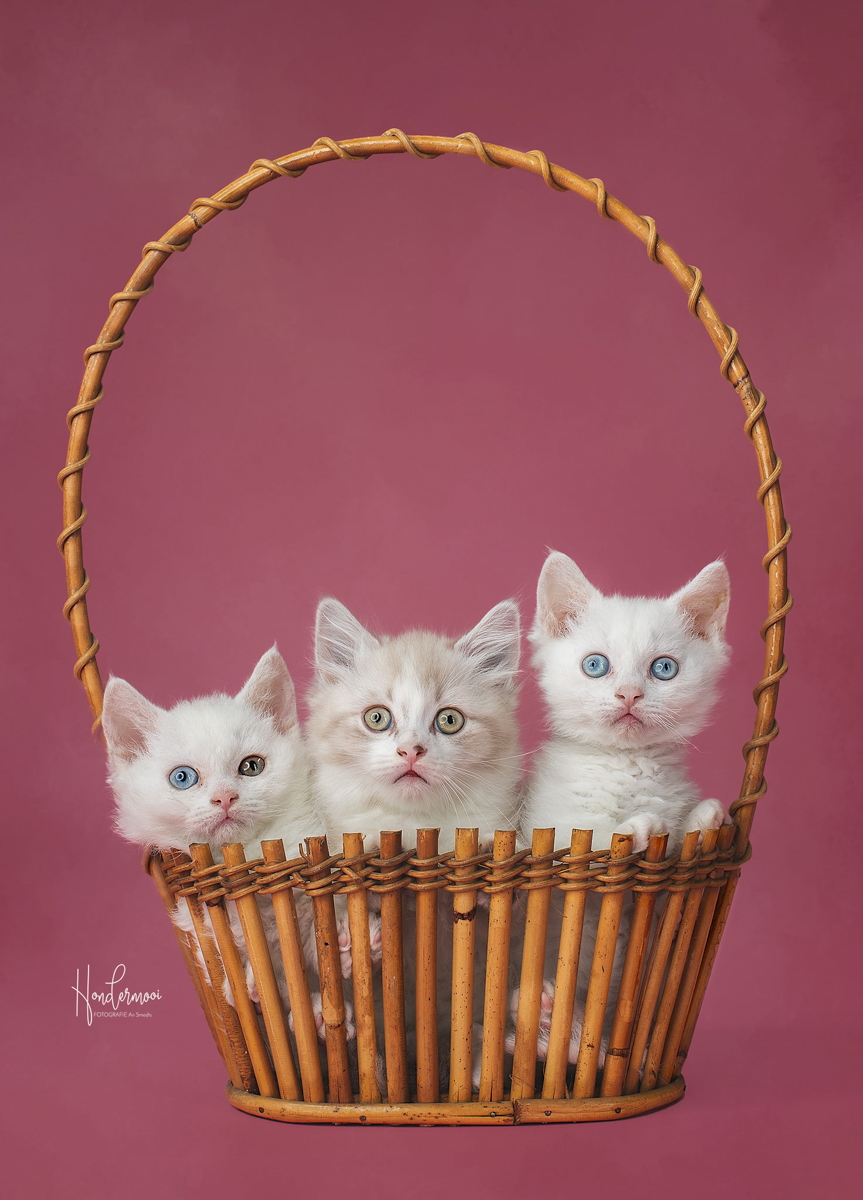
Are you looking to start with studio photography but not sure where to begin? Consider a private studio photography workshop. Tell me more about the space you have available and the goals you’d like to achieve, and I’ll be happy to show you all the possibilities for starting your own studio at home!

